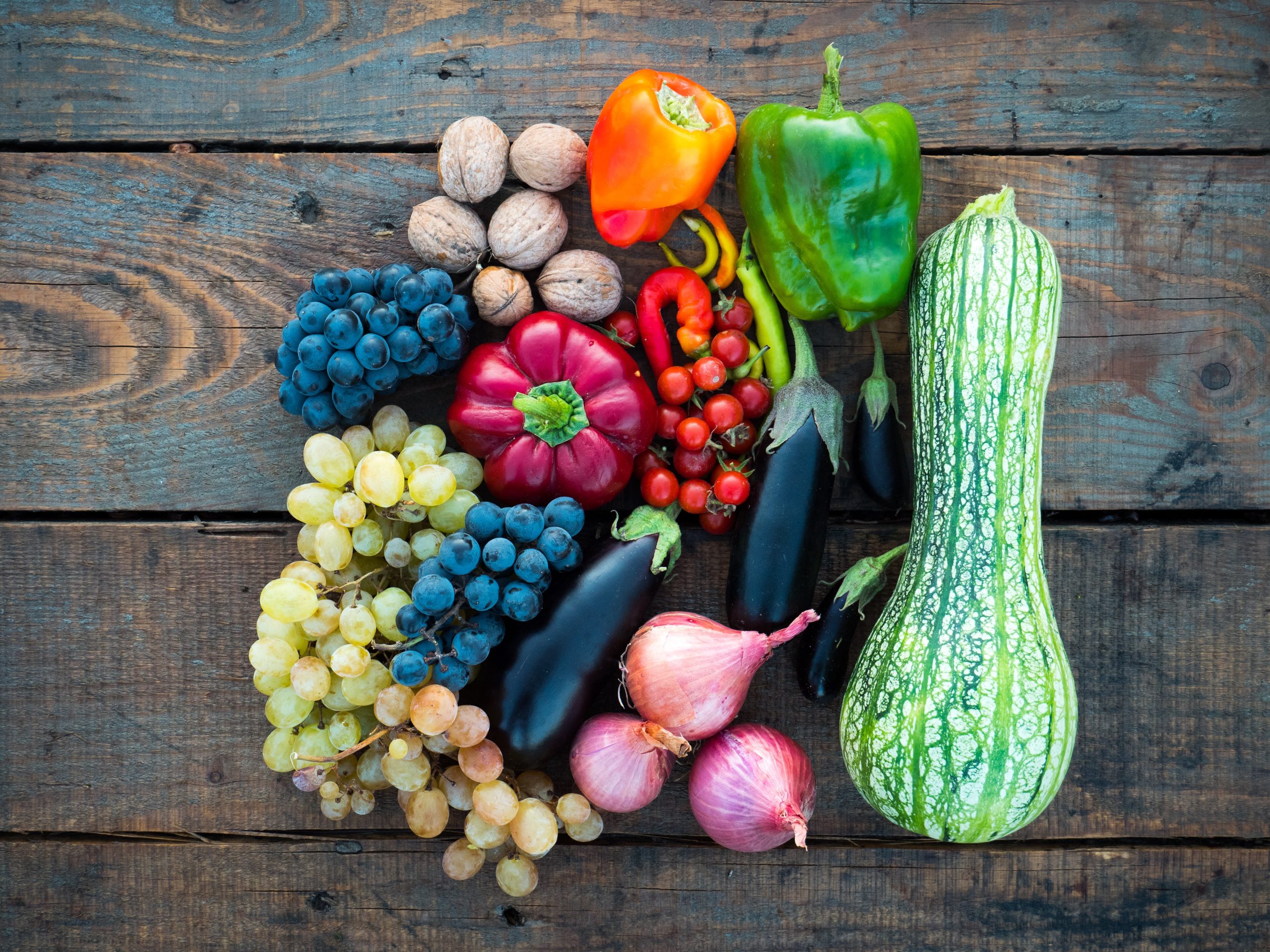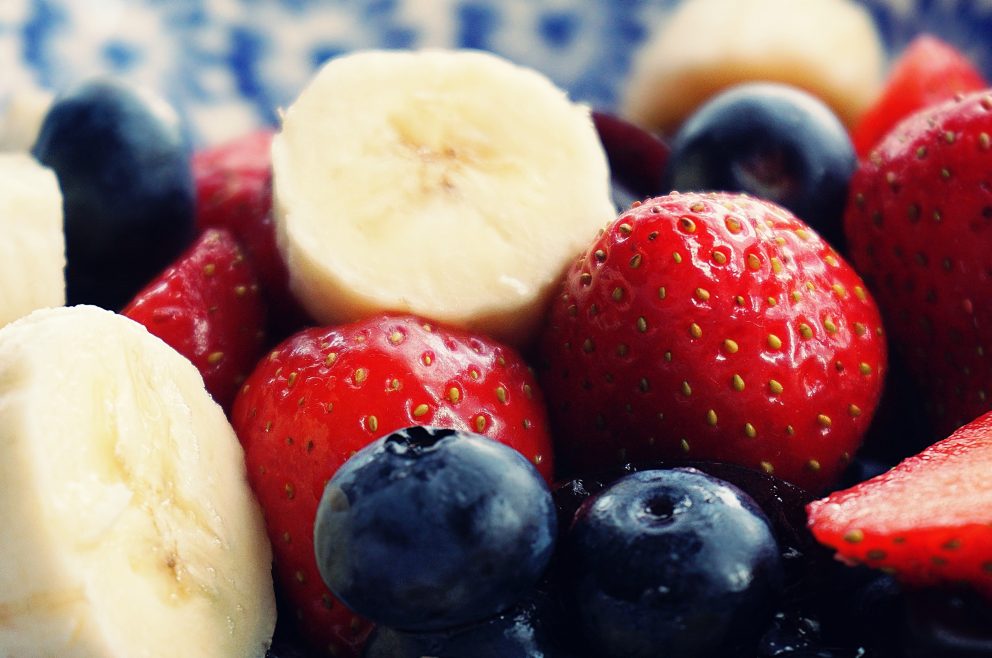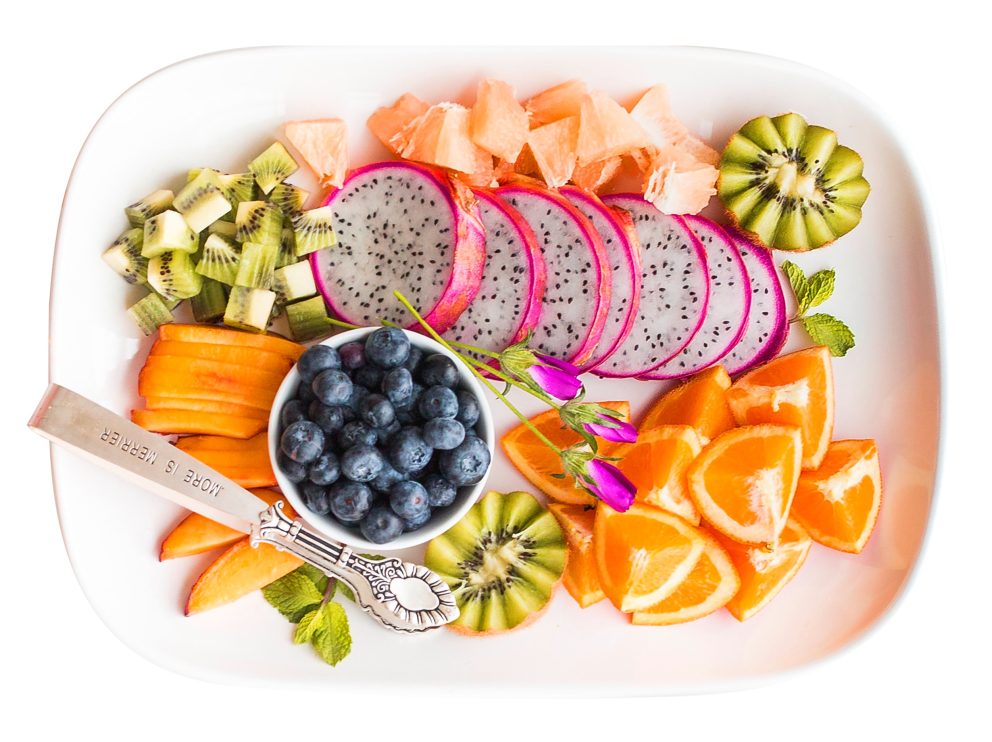
What are Flavonoids? And What is the Difference Between Flavonoids and Bioflavonoids?

Photo by Dan Cristian Pădureț
The growing legalization of cannabis and other natural “drugs” like psilocybin has increased our interest in their biochemistry. People are more curious about the compounds in these biological marvels and how they interact with the body.
Flavonoids might not exactly make you want to rush out and learn organic chemistry but they are pretty powerful. In the hierarchy of cannabis compounds at the top of everyone’s interest are cannabinoids like THC and CBD. People channeling their inner cannabis connoisseur may be curious about how terpenes can add flavor and scent notes to their bud. Flavonoids, often referred to as antioxidants, have just as many healing properties.
What are flavonoids and what do they do? What are bioflavonoids? Are they the same? Flavonoids are a fascinating branch of chemicals found in plant and plant products that give plants their pigment but do a whole lot more for humans.
This article covers the various types of flavonoids that aren’t only found in cannabis but throughout the plant kingdom. Your edible or joint may be chock full of the vitamins, minerals, and antioxidants you may be looking for from your favorite superfoods or vitamins.
What Are Flavonoids?
Flavonoids are a group of phytochemicals (chemicals made by plants) commonly found in fruits, vegetables, and other plant-based food products like chocolate, coffee, vinegar, and wine.
Flavonoids offer a range of health benefits to both humans and plants. Like with cannabinoids, flavonoids serve their own biological purpose in helping plants thrive. They also have an added bonus when incorporated into your diet.
Often providing pigment as well as other benefits like UV protection, antifungal and antimicrobial properties, attracting pollinators and repelling pests and potential threats, flavonoids are hard at work in plants.
When consumed by humans they have a whole host of health benefits.
Flavonoids Benefits
Flavonoids have been shown to have antiviral, anti-microbial, anti-allergy, anti-inflammatory, antiulcer, antioxidative, anti-mutagenic and anti-carcinogenic properties. They also have the capacity to modulate key cellular enzyme functions.
Are Flavonoids Antioxidants?

Photo by Suzy Hazelwood
When talking about antioxidants, you’re often talking about flavonoids. For example, the nutritional benefits of everything from blueberries to acai to chocolate and even wine are the flavonoids found in these products.
There are other compounds that can have antioxidant properties but the long list of flavonoids is on the top of that list.
Antioxidants can sound like a buzzword to sell supplements or push for fruits and vegetables but they are chemicals in food and man-made supplements that help prevent cell damage by combating free radicals.
What Do Flavonoids Do?
In plants, flavonoids serve a number of purposes in keeping plants alive. Like cannabinoids and terpenes, flavonoids serve different behind the scenes roles in a plant’s survival. Flavonoids help protect the plant from external threats like UV radiation, microbes, fungi, and pests.
Some flavonoids also help attract different pollinators while discouraging potential animals from eating them. Most importantly, flavonoids combat free radicals in plants and human beings.
Free radicals are compounds that have an uneven electron. Found in anything from ambient radiation to alcohol and fried foods these free radicals try to balance out their uneven electrons. This can put our cells under oxidative stress.
Our cells can naturally oxidize and break down and that’s how they age and die. The stress created by free radicals. This stress can cause them to prematurely break down, age, and mutate.
Our bodies have natural ways to combat free radicals but they can lessen over time or because of stress. What makes antioxidants so desirable is that they directly tackle free radicals and help support the endogenous chemicals in our body that tackle them.
That support can lead to greater longevity and less disease and relieve a lot of the stress some of our cells can be under.
Apply for a Medical Marijuana Card Online Today
Join over 100,000 patients who have chosen Green Health Docs as their medical cannabis doctors. We have a 99% approval rate and offer a 100% money back guarantee!
What Flavonoids Are in Cannabis?
Twenty six flavonoids have been discovered in cannabis adding to the hundreds of cannabinoids and terpenes at work in medical marijuana. Some of the key flavonoids in cannabis include canflavins, orientin, vitexin, isovitexin, quercetin, luteolin, kaempferol, and apigenin.
Cannflavins
Cannflavins are the only flavonoids exclusive to cannabis. In addition to being antioxidants, they also are neuroprotective meaning they help protect your nerve cells from toxins and the advancement of certain neurological diseases like Alzheimers.
Cannflavins are also highly anti-inflammatory. The Chicago Tribune and Science Alert both reported on how canflavins are 30x more effective than Aspirin. In conjunction with the anti-inflammatory benefits of CBD this is a great combination.
Orientin
Orientin is a potent antioxidant with antibiotic, anti-inflammatory, and anti-cancer properties. It is found not only in cannabis but in basil, and teas like rooibos.
Vitexin
Vitexin is found in passionflower, chaste berry, hawthorn, and pearl millet. Vitexin has pain-blocking properties, antioxidant, anti‐inflammatory, anticancer, antinociceptive, and neuroprotective effects. It’s of high interest to scientists over its potential with Alzheimer patients.
Isovitexin
Like with delta-8 and delta-10 THC, Isovitexin is an isomer of vitexin. They share much of the same benefits as vitexin and isovitexin is one of the active anti-inflammatory ingredients in the Chinese herbal remedy hackberry.
Quercetin
Quercetin is a flavonoid found in almost all vascular plants. It helps relieve allergies, reduce heart disease, provides anti-inflammatory, antimutagenic (i.e., prevent changes in DNA sequences or mutations in cells), antiviral, antifungal, and antioxidant effects.
Luteolin
Luteolin is found in celery, thyme, green peppers, and chamomile tea. It has anti-cancer, antioxidant, anti-apoptotic (cell death), and anti-inflammatory properties. It may be useful in traumatic brain injury, spinal cord injury, and other inflammatory toxicity.
Kaempferol
Kaempferol is a very powerful flavonoid that has proved effective in combating neurological diseases. In addition to being neuroprotective, it can help protect against the advancement of neurodegenerative diseases like Parkinson, Alzheimer’s and Huntington’s disease.
Kaempferol also helps the body in producing new red blood cells, combat free radicals and helps prevent cancer from metastasizing (spreading) throughout the body.
Apigenin
Apigenin lowers blood pressure and provides muscle relaxing, sedative, and anti-anxiety effects.
Apigenin has shown promise for organ transplant patients, particularly those who have suffered from renal injury or need kidney transplants. When combined with CBD there’s the theoretical potential to reduce the need for immunosuppressant drugs.
Are Flavonoids and Bioflavonoids the Same?
The term flavonoids and bioflavonoids are essentially interchangeable. They both mean the pigments and polyphemic compounds in plants that provide antioxidants and other biological benefits to humans.
What Are Bioflavonoids?
Bioflavonoids are the same as flavonoids. This may seem confusing. There may be the subtlest of differences in their chemical bonds but most medical research and scientific terminology uses these two terms interchangeably.
However, among flavonoids and bioflavonoids there are three different categories:
- Flavonoids
- Isoflavonoids
- Neoflavonoids
Additionally, the groups of bioflavanoids/flavonoids are further broken down into twelve separate categories:
- Anthocyanins
- Coumestans
- Flavanones
- Flavanonols
- Flavans
- Isoflavonoids
- Isoflavones
- Isoflavanes
- Isoflavandiols
- Isoflavenes
- Pterocarpans
These classifications and distinctions are much more important as they highlight the different atomic structure and potential benefits and activity of flavonoids.
Bioflavonoids Benefits
Bioflavanoids share the same benefits as the flavonoids shared throughout this article.
What Is Vitamin P?
Vitamin P is another name for flavonoids and bioflavonoids. When originally discovered in 1930 in oranges, the first flavonoids were designated Vitamin P. Since then more than 4000 flavonoids have been identified.
The term Vitamin P fell out of scientific terminology in the 1980s. Some writers still occasionally use it to highlight the nutritional value of certain flavonoids like rutin.
Foods High In Flavonoids

Photo by Pixabay
Many of the foods we seek out for our health benefits include foods high in flavonoids. The foods we often call superfoods due to their dense nutrient content often are loaded with antioxidants and flavonoids.
A telltale sign is often highly pigmented foods have flavonoids because many flavonoids are what give food their color.
Foods high in flavonoids include:
- Broccoli
- Buckwheat
- Capers
- Cocoa
- Coffee
- Dark Chocolate
- Fruits (Check out a full list below)
- Herbs & Spices (Basil, Cinnamon, Thyme, Oregano)
- Garlic
- Green Leafy Vegetables (Spinach, Kale, Watercress)
- Legumes (Black beans, Kidney Beans)
- Onions
- Olives
- Parsley
- Red Cabbage
- Red Onions
- Red Wine
- Sea Buckthorns
- Soybeans
- Teas (Black,Green, Oolong)
What Fruits Have Flavonoids?
While many may only know the buzzwords antioxidants or free-radicals, people are on the hunt for flavonoid-rich foods. Many of your favorite fruits can have flavonoids. Fruits containing flavonoids include:
- Acai
- Apples
- Apricots
- Avocados
- Bananas
- Berries (Blueberries, Blackberries, Strawberries, Cranberries, Goodberries)
- Cherries
- Currants
- Citrus Fruits (Lemons, Limes, Grapefruits, Tangerines)
- Grapes
- Kiwis
- Olives
- Pears
- Peaches
- Persimmons
- Plums
- Pomegranates
- Rhubarb
- Watermelon
Do Bananas Have Flavonoids?
Yes, bananas contain a few different flavonoids, most notably Catechin. Catechins are also found in tea, apples, persimmons, cacaos, grapes, and berries.
Catechins have been linked to a reduced risk of cardiovascular disease, anticancer, reduce the advancement of neurological diseases and even the potential for being anti-obesity. However, before you run out and bulk up on bananas, catechins can vary depending on their source.
Which Wine Has The Most Flavonoids?
We have all heard about the benefits of a glass of red wine. It’s mainly due to the flavonoids found in the skins and seeds of red grapes. If you’re searching for the wine with the most flavonoids it’s Cabernet Sauvignon, followed closely by Petit Syrah and Pinot Noir.
A study from the University of California at Davis compared wine varietals for their flavonoid content. A good frame of reference is the sweeter the wine, the fewer amounts of flavonoids. White wines tend to eliminate the skin of grapes which are full of these antioxidant compounds. While the alcohol is not the best for you, the presence of these flavonoids have a whole host of health protective properties.
Are There Flavonoids In Coffee?
Like wine, coffee can seem unhealthy due to its caffeine content but is chock full of healthy biological compounds. Coffee does contain flavonoids, and polyphenols and phenolic acids.
Like cannabis, coffee contains quercetin. It also contains myricetin as well as epicatechin and epigallocatechin. These flavonoids are helpful
Are There Flavonoids Supplements?
Many like to boost their vitamin and mineral intake by taking supplements and there are flavonoid supplements. However, to get the most from flavonoids supplements may not be the answer. They may even be dangerous.
A 2011 review compared the effect of flavonoids in food versus those in supplements. The issue is that when you eat foods with flavonoids from fruits and vegetables and other products they also contain secondary metabolites. These secondary compounds work together to help you get the most biological bang for your buck.
These metabolites help in the processing of these flavonoids and boost their biological benefits. The process of cultivating flavonoids for supplements purifies singular flavonoids but this can limit their efficacy.
The Oregon State University Linus Pauling Institute’s Micronutrient Information Center warns that flavonoid supplements can have drug interactions with prescription drugs which can increase the toxicity of drugs and even cause overdose.
As we expand our use of certain herbal supplements, there will be greater discovery of how they interact with more traditional prescription medications. Whenever taking supplements, consult with your physician. However, given these studies, it may be worth getting your flavonoids from fresh foods.
Are Flavonoids Phenolic Compounds?
Flavonoids are actually the largest group of naturally occurring phenolic compounds. To those who skipped organic chemistry, all phenolic compounds have a chemical structure consisting of an aromatic ring with one or more hydroxyl groups.
The main types of phenolic compounds are phenolic acids, stilbenes, lignans, tannins or proanthocyanidins and flavonoids. They often have antioxidant properties and have applications for everything from pharmaceuticals and the food industry to cosmetics, packaging and even textiles.
Phenolic compounds are a selection of secondary metabolites created by plants in response to certain environmental factors. Essentially, plants react to environment conditions or compounds for example they’ll create flavonoids as a UV screen when exposed to UV radiation or to attract insects to help them pollinate.
Other roles of phenolic compounds include antioxidants, structural polymers (lignin), attractants (carotenoids), signal compounds (salicylic acid and flavonoids) and defense response chemicals to predators and pests (tannins and phytoalexins).
Are Flavonoids Water Soluble?
Flavonoids are water and alcohol soluble. However, that does not mean that they are necessarily the most bioavailable. While flavonoids can dissolve in water their solubility can vary. This means that some can have low oral bioavailability.
This means when you take some flavonoids they may not be as quickly or readily absorbed and utilized by your body and instead simply excreted from the body.
Final Thoughts
You hear about antioxidants all the time and how they can benefit the body. You wouldn’t automatically think of cannabis. However, these chemicals are insanely valuable to your health.
Flavonoids, while not as widely known and discussed, do include the nutritional components of everything from fruits and vegetables to green tea, coffee, and wine. While talk of superfoods may encourage you to add blueberries to your breakfast or incorporate acai to your diet you can now consider cannabis as your next source of antioxidants.
To get the most of cannabis’s medical value consider applying for your medical marijuana card today.
 This article has been reviewed by Dr. Anand Dugar, an anesthesiologist, pain medicine physician and the founder of Green Health Docs. Graduating from medical school in 2004 and residency in 2008, Dr. Dugar has been a licensed physician for almost 20 years and has been leading the push for medical cannabis nationwide.
This article has been reviewed by Dr. Anand Dugar, an anesthesiologist, pain medicine physician and the founder of Green Health Docs. Graduating from medical school in 2004 and residency in 2008, Dr. Dugar has been a licensed physician for almost 20 years and has been leading the push for medical cannabis nationwide.
